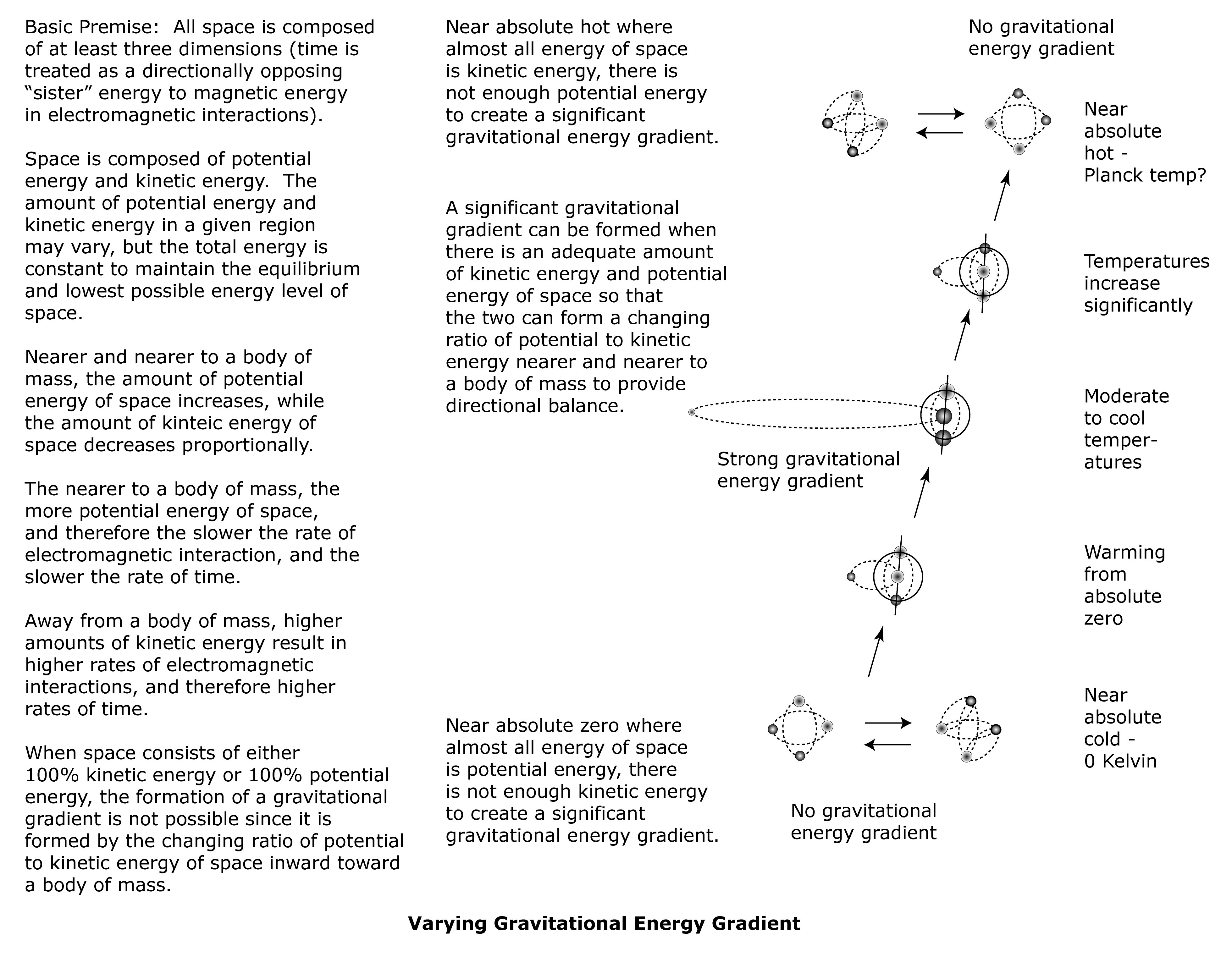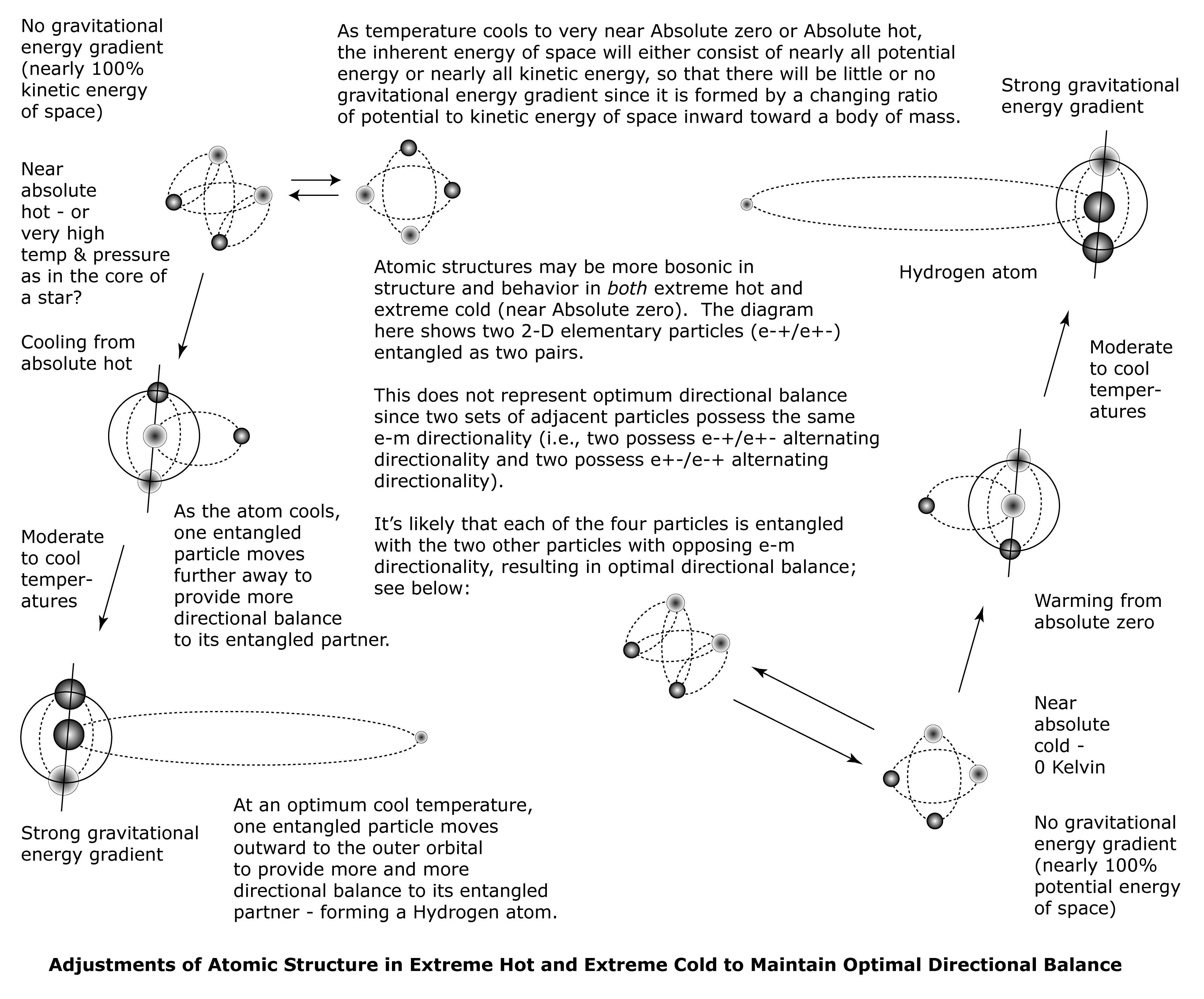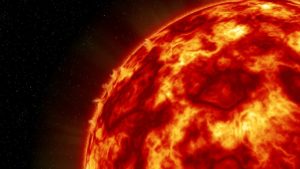

Charge may be due to the changing strength of the gravitational gradient that oscillates with each electromagnetic interaction of a particle. If “charge” is due to an oscillating gravitational gradient, then at limits where the energy of space is 100% kinetic or 100% potential energy, “charge” fields would not exist – (it is theoretically impossible to reach absolute zero or absolute hot) – because the gravitational energy gradient is due to the changing ratio of potential to kinetic energy of space inward or outward from a body of mass. The extremely weak gravitational energy gradients and charge fields of particles near absolute hot or absolute zero would certainly impact particle behavior and interactions, allowing particles to act as a single energy entity or as a collective boson.


For the lower temperature limit of absolute zero, space consists of 100% potential energy. There would be no gravitational energy gradients since they are composed of a changing ratio of potential to kinetic energy of space inward toward a body of mass-energy, and in this case, there would be 0% kinetic energy of space.
For the upper temperature limit of absolute hot, space consists of 100% kinetic energy. There would be no gravitational energy gradient since there would be 0% potential energy of space, and therefore a changing ratio of potential to kinetic energy inward toward a body of mass-energy would not possible.
If black holes exist at the upper temperature limit, this suggests that black holes may be governed by elementary forces other than gravitational energy gradients. When space consists of 100% kinetic energy, space itself may take on some other form. Black holes may consist of two powerful opposing energies that oscillate between high and low energy levels (analogous to electromagnetic energy). The stars and other matter in a galaxy may help provide directional balance to the energy of the black hole giant that serves as the nucleus of the galaxy.